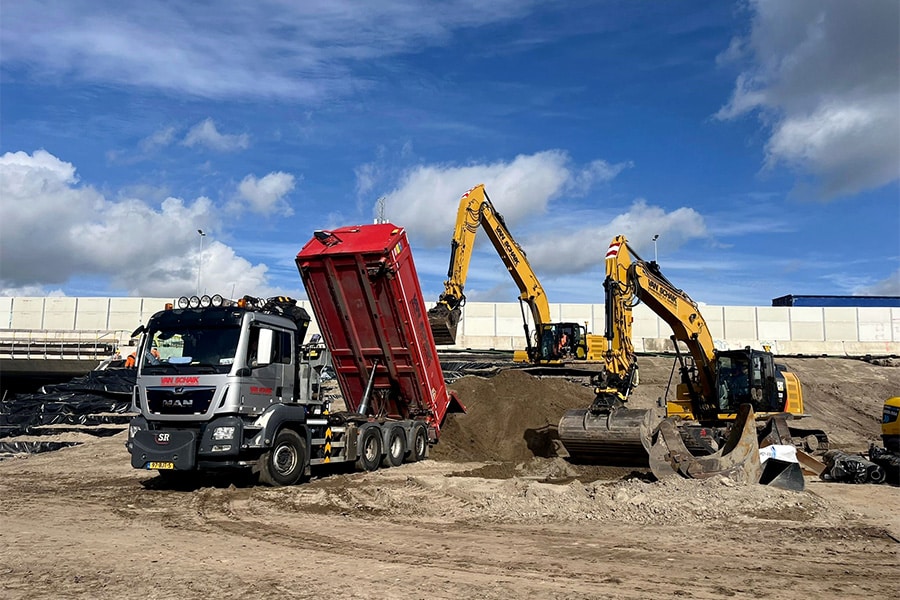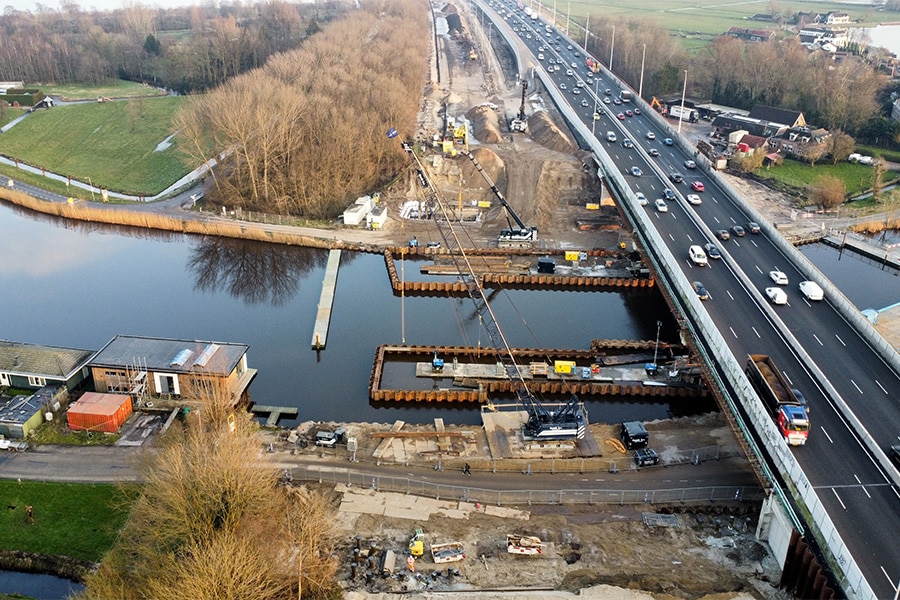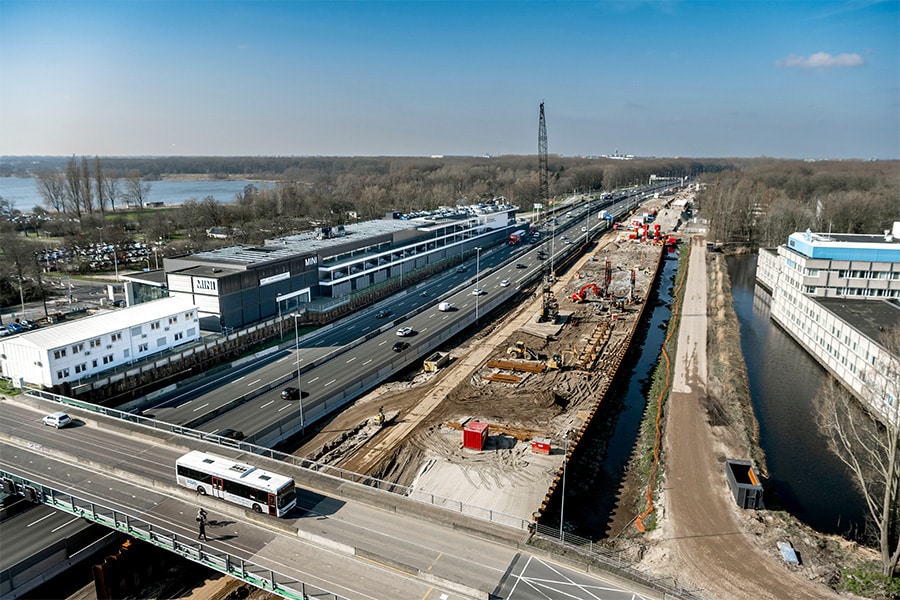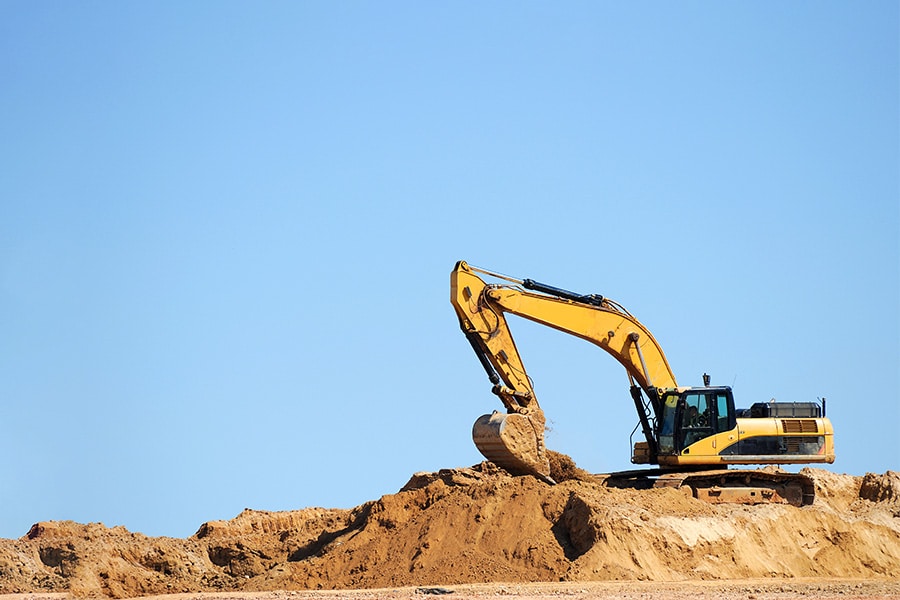
Drinking water pipeline rehabilitated without excavation
In Bad Hall, one of the oldest drinking water pipes still in use needs to be replaced. The old fiber cement pipe in da 250 mm has long since reached its capacity limit. In addition, some pipe bursts had to be repaired over time. AGRU protective jacket pipes in da 315 mm and SDR 17, installed using the burst protection method, are now being used as replacements. The soil-friendly rehabilitation method saves the disposal of the old pipeline and ensures that the new pipeline is placed exactly in the original pipeline route.
A 450 m long pressure pipeline for the Voglhub elevated tank in da 280 mm and a 1,800 m long transport pipeline with a branch from this elevated tank in da 315 mm will be installed. On its way to the Pfaffenwimm elevated tank, the transport pipeline overcomes a height difference of 17 m and the pressure in the pipeline system reaches 5.5 bar at its lowest point.
The last fiber cement pipe was installed in 1979
"Unfortunately, there have been a few pipe bursts in this area in recent years," says Anton Pöllabauer, director of the Bad Hall Kurbezirk Waterverband. As maintainer of the new PE pipe system, quality and longevity are very important to him: "The last fiber cement pipe was installed in 1979. For more than 20 years, however, we have only installed PE pipe systems from AGRU. We have rehabilitated older water pipes with AGRU protective jacket pipes using the burst lining and plowing methods and have had very good experiences with this. We assume that the newly installed pipes will have a service life of at least 50 years."
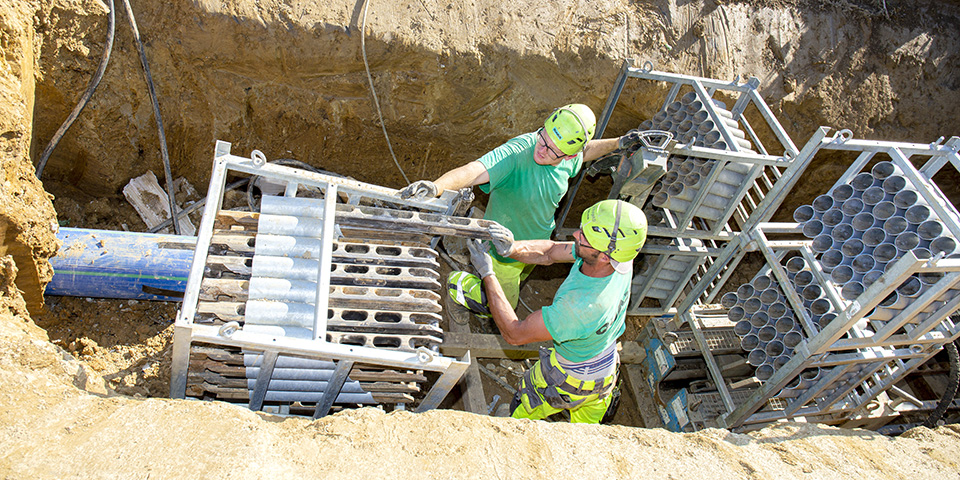
In the target well, tie rod segments are removed from the machine and stacked
Lower installation costs thanks to long pipe strings
To ensure the most economical installation, the burst lining method is also used this time. The premise here is that the installation costs decrease with the length of the piping systems to be put on. The contractor, WDS Bau GmbH, an Upper Austrian civil engineering specialist known for meticulous pipeline construction, calculates the maximum insertion lengths between the start and target wells based on the soil conditions and the resulting tensile forces up to 250 bar pressure. Up to 144 m long pipe strings are manufactured on site by butt-welding 18 m long protective jacket pipes from AGRU Kunststofftechnik GmbH. Sureline III pipes with a protective sleeve offer double safety, as the stress-crack-resistant PE 100-RC core pipe is protected from the splinters of the burst pipe by a scratch-resistant protective sleeve made of PP when the pipe is clamped. An additional advantage is fast butt welding due to the factory stripped ends. AGRU Kunststofftechnik supplied a CNC-controlled butt welding machine for the welding process. Thanks to the new technology, temperature, pressure and time are pre-programmed, ensuring the quality of the welds. The parameters of each individual weld and the name of the welder are also documented. The finished pipe strings are then pulled into the old pipe using crack coating. Crack coating is a cost-effective renovation method for renovating pipes made of brittle materials without excavation. By demolishing the old pipe, a new pipe with a significantly larger diameter can be pulled. This requires some preparatory work.
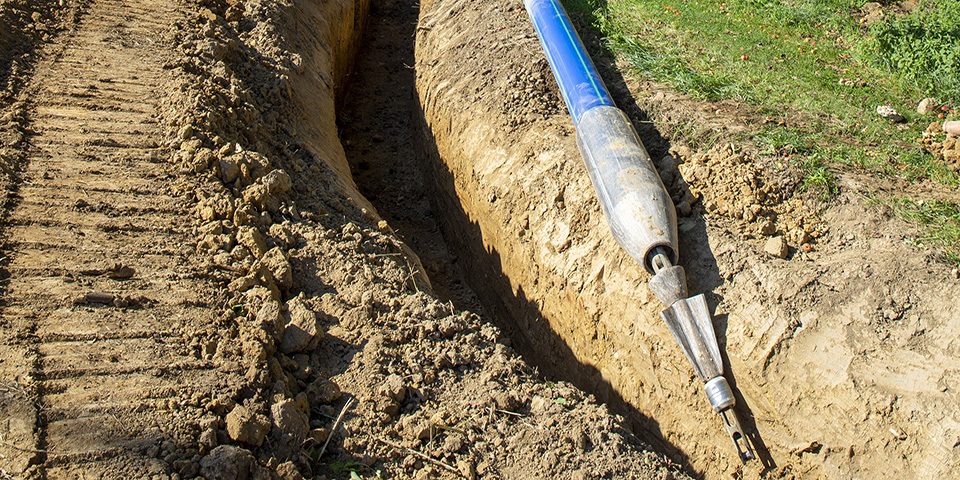
The breaker head and expansion taper are already mounted on the tube
Barstlining - how it works
First, a camera is used to navigate through the old pipeline. Fittings made of metal or cast concrete cannot be broken open and therefore must be removed by the open method. The starting and finishing pits are then excavated at precisely specified intervals. In the starting pit is the crushing head with expansion cone on which the pipe string to be drawn is mounted. A hydraulic pulling device is located in the target well. The old pipe runs between the two wells, in which a pulling rod consisting of numerous segments is placed. The path of the hydraulic cylinder of the traction device corresponds exactly to one segment of the traction clutch. The breaker head is now mounted on one side of the drawbar. The opposite side of the drawbar is attached to the traction vehicle. By pulling the boom, the cracking head breaks the cement pipe into pieces. The next expanding cone moves the resulting fragments to the ground and makes way for the new larger-sized pipe, which then follows. In this way, the old pipe can be destroyed at once, the channel widened and the new pipe withdrawn. The site team in the target well removes the new segment of tie rod from the well after each pulling operation. This process is repeated until the cracking head and the pipe behind it finally reach the target pit. Throughout, the tensile forces acting on the pipe are electronically recorded and documented. After successful installation, the complete pipe system is disinfected and pressure tested.
Gerhard Dieringer is managing director of WDS Bau GmbH: "The welding machine supplied by AGRU worked perfectly. We divided the site into 12 sections for cracked cladding. We were able to crack and conduct 1-2 sections per day. We were very satisfied with the products and services of AGRU Kunststofftechnik GmbH from preparation to delivery and quality."
